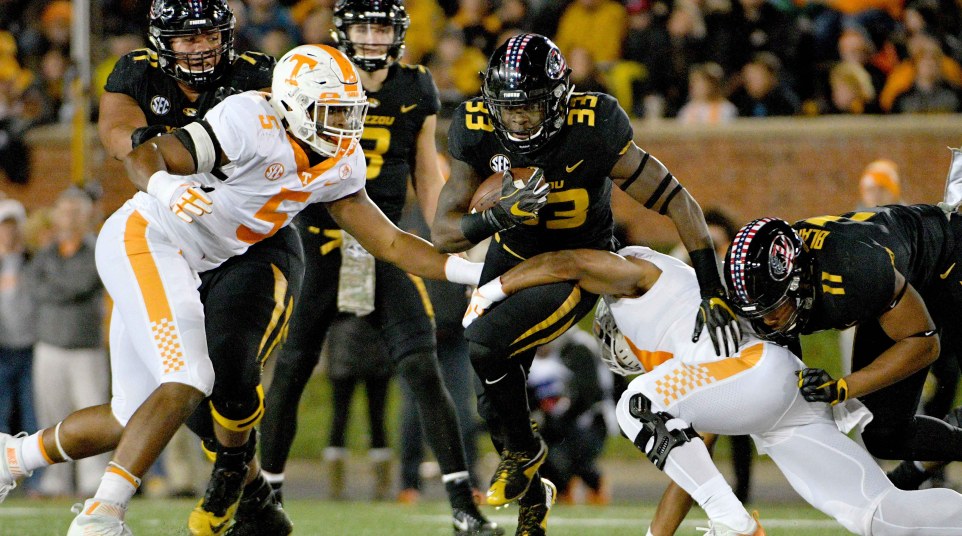
Tennessee football: 6 swing games that will define the 2018 Vols
Prognosticating is always a dangerous endeavor for a sports journalist. Predicting what Tennessee’s football team will be able to accomplish this season is a prime example.
There hasn’t been much access to UT’s program under first-year head coach Jeremy Pruitt. Practices have been open for a few minutes here and there. The Orange and White Game provided a longer look at the Vols as did a recent open practice to open preseason camp. Interviews with Tennessee players and coaches have also been limited, so what’s a sports writer to do?
I’ll be basing my preseason predictions on two assumptions. First, UT’s roster needs a rebuild and will not be able to compete with the SEC stalwarts. Second, I think UT’s roster is actually better than it looked last season under former coach Butch Jones. Last year’s Vols had poor chemistry and poor fundamentals, which was primarily born from poor coaching.
With that said, I’m counting ETSU, UTEP and Charlotte and surefire wins. As for losses, I expect the Vols to come up short against Alabama, Georgia and Auburn. All were in the national championship hunt last season and are expected to be elite teams again in 2018.
Based on that prediction, that would put the Vols at 3-3 with six “swing” games. Here are the games that will determine just how much success the Vols will have this season.
Sept. 1 vs. West Virginia
While most believe this is a certain loss for the Vols, I tend to think UT has a decent chance to upset the Mountaineers, who are ranked No. 20 by the Coaches Poll and feature a Heisman candidate in Will Grier. After a long, hard offseason I think the Vols will be extremely hungry. With a new coaching staff, I also believe the unknown factor will help the Vols. I also think Pruitt’s defensive prowess will help the Vols slow Grier and West Virginia’s high-scoring offense.
Chances of winning: 35 percent
Sept. 22 vs. Florida
Like the Vols, the Gators’ roster also needs to improve under first-year coach Dan Mullen. Florida will certainly be favored, but with an uncertain quarterback situation and the game in Knoxville, I think the Vols have real shot. UT should be coming off at least two victories and Neyland Stadium should be rocking.
Chances of winning: 40 percent
Oct. 27 at South Carolina
The chances of the Vols winning this game will rely heavily on how much of a beating they take from their previous three opponents: Georgia, Auburn and Alabama. Of all the swing games, this will probably be the toughest to win. The biggest mismatch will likely be UT’s defensive backs versus South Carolina’s talented group of receivers, led by Deebo Samuel.
Chances of winning: 30 percent
Nov. 10 vs. Kentucky
This used to be an easy win for the Vols. It wasn’t last year as UT lost to Kentucky 29-26, ending the Vols’ 5-game winning streak in the series. However, that loss occurred when the Vols were about to run off the rails. With revenge on their minds, I expect the Vols to beat the Cats this season.
Chances of winning: 60 percent
Nov. 17 vs. Missouri
This is probably the hardest swing game to predict. Missouri will be led by Drew Lock, who is expected to be one of the best quarterbacks in the nation this season. But Lock has his own Georgia-South Carolina-Alabama gauntlet to navigate long before he faces the Vols. Even if he’s upright and healthy, I have little faith in Derek Dooley, Missouri’s new offensive coordinator. In a matchup of football schematics, I’ll take Pruitt over Dooley any day.
Chances of winning: 50 percent
Nov. 10 at Vanderbilt
Here’s a sobering stat: Vanderbilt has beaten the Vols 4 of the past 6 seasons. This game could be determined by motivation. Both teams could be playing for bowl eligibility. It also could be determined by depth. In the past, the Vols could best Vandy, in part, because UT’s roster could withstand injuries throughout the season better than the Commodores. I might be proven wrong, but I don’t think Pruitt’s teams will quit even if they have to endure a frustrating season. The same couldn’t be said for Jones’ teams.
Chances of winning: 70 percent
